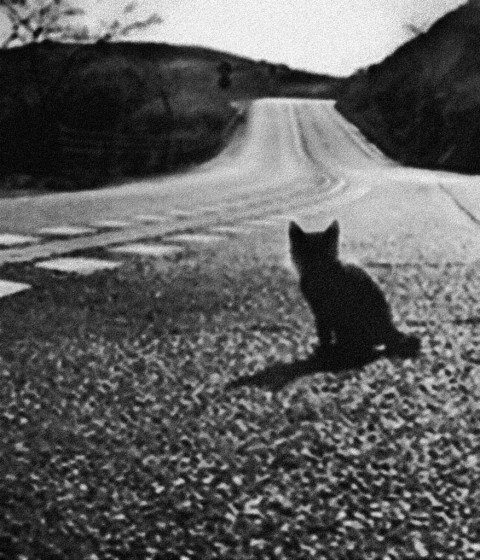The cat was gone 24 hours before Sheila would admit it. The Web sites, Sheila saw later, tell you to begin your recovery of the cat the moment you think it might be missing. As soon as you run around the house, frantically poking your head into cabinets, opening kitchen drawers, checking garbage cans, draining sump pump basins, calling, “Phoebe! Phoebe!” you need to get a grip and admit to yourself that the cat has vamoosed. You can’t tell yourself, She’s just hiding somewhere inside I haven’t thought of. Right now I’ll go to bed and tomorrow I’ll wake up and there she’ll be, in the kitchen, up on her little stool, waiting for me to spoon her stinky food into her silver bowl.
You can’t go to bed when your cat is outside somewhere in the cold, shivering despite her coat of fur, soft, young, lush as sable, hunkering down in corners of people’s wood sheds, hiding from raccoons, craving canned liver, wondering why her owner couldn’t admit that her cat has wandered away by accident, she was let out and then lo! she saw the whole wide world and she was curious and now she is lost she’s two blocks away but she is nevertheless lost; she has no idea which alley she should take to find that warm place again, that place where she was allowed to doze on the queen-sized Tempur-Pedic and she was fed, on demand, Purina Pro Plan chicken with liver, and a doting Pomeranian licked her ears when she was snoozing in a patch of sun slanting through the window in the den, late in the day.
All these animals, she’d gotten them for her kid. Or the kids dad who lived in another house had gotten them for the kid and they’d ended up with Sheila. Don’t ask how. There were stories. None of the other mothers would have permitted any of this business. Some of the kids friends had no pets none, not even a betta and from their mothers Sheila would get parenting tips. They’d look her in the eyes, instructionally, and tap her forearm, and tell her, It’s OK to say no. Sheila would give the mother a look of relief, as if saying no was an option that had never occurred to her before, and she’d bow her head. I know you’re right, she’d say. And then she’d get the woman and her petless child through the door and she’d call after them, Come again!
One spring, when the kid was eight, Sheila was crouched among the ajuga, wondering why it was failing ajuga was supposed to be an easy plant, so why couldn’t she grow it? and she spotted a beautiful small frog, intensely green, nearly glittering among the blackened flora, and she called out to her kid. Look at this! The little frogs emerald back was inked with rows of artful spots that looked impossible. Immediately the kid had the frog on her palm, so they were all eying each other, and the creature raised itself on its front legs, its clubby fingers splayed, and it showed them its jungle-patterned underbelly shapes of orange and black fluidly blended and the kid said, We have to keep it. Sheila started to refuse, but she could see the frog didn’t belong in this garden, this neighborhood, this hemisphere. This frog was tropical. It was April but the nights were cold. This frog was far from its home. This frog had to be taken in and kept warm.



 The SmokeLong Grand Micro Contest (The Mikey) is now an annual competition celebrating and compensating the best micro fiction and nonfiction online.
The SmokeLong Grand Micro Contest (The Mikey) is now an annual competition celebrating and compensating the best micro fiction and nonfiction online.